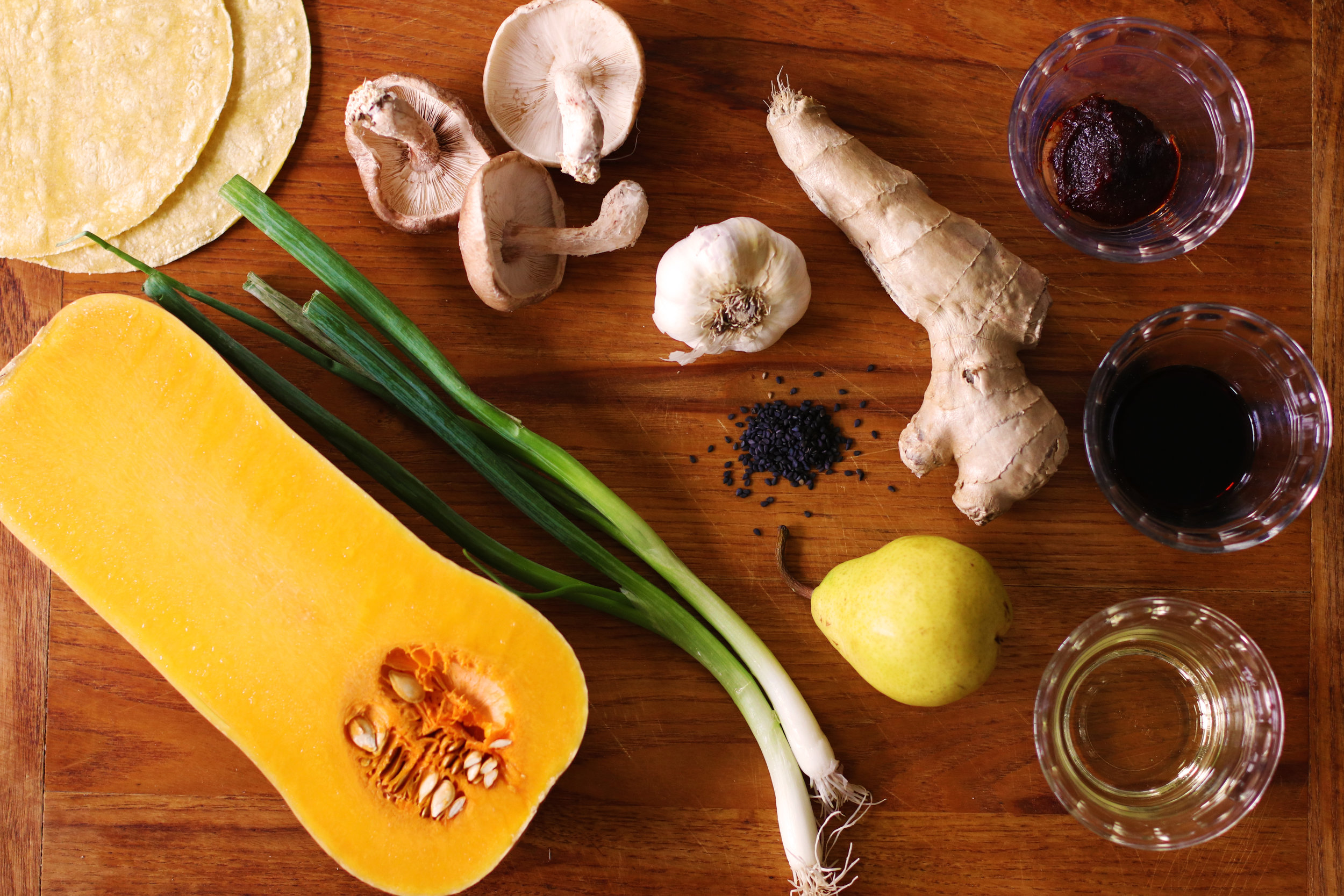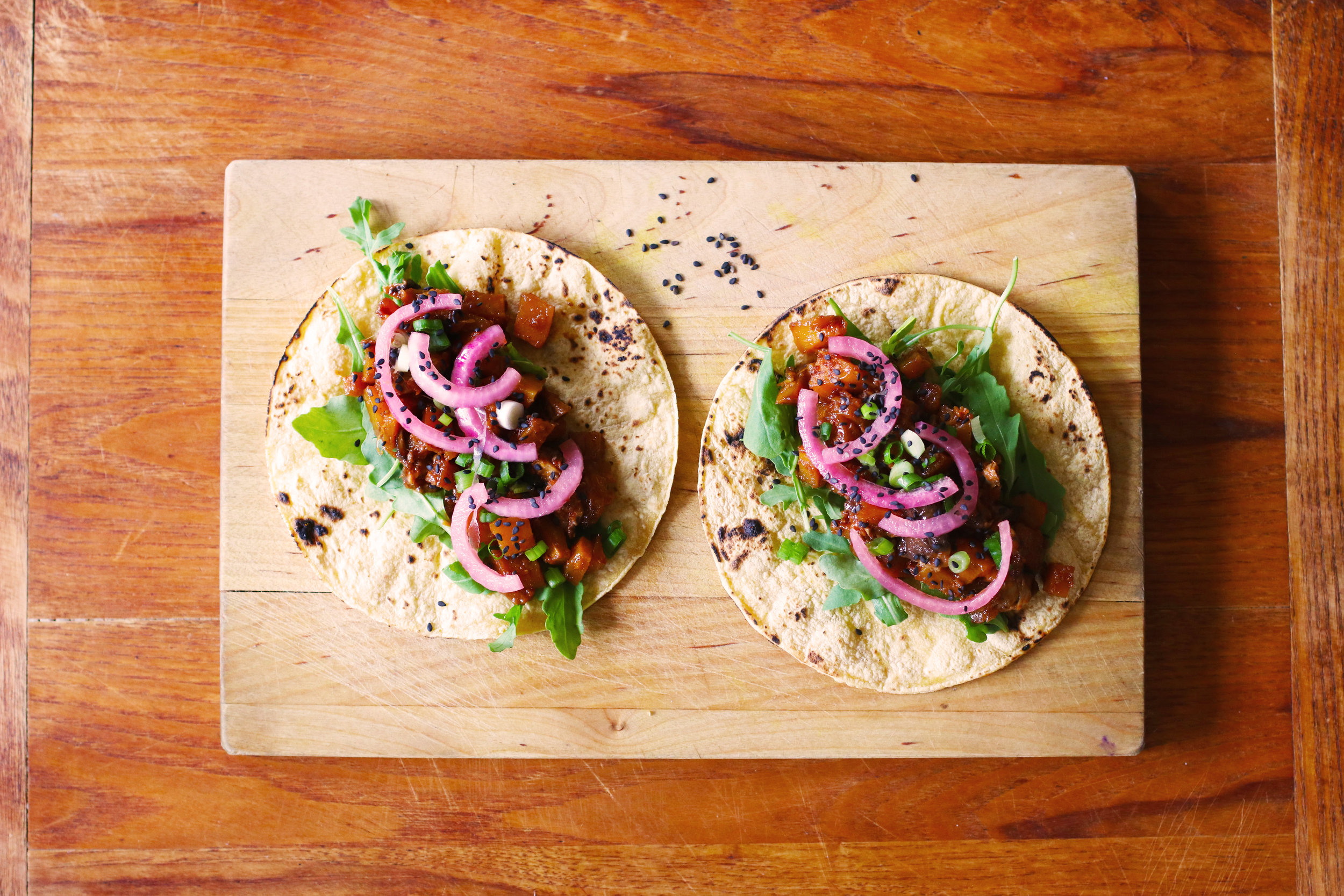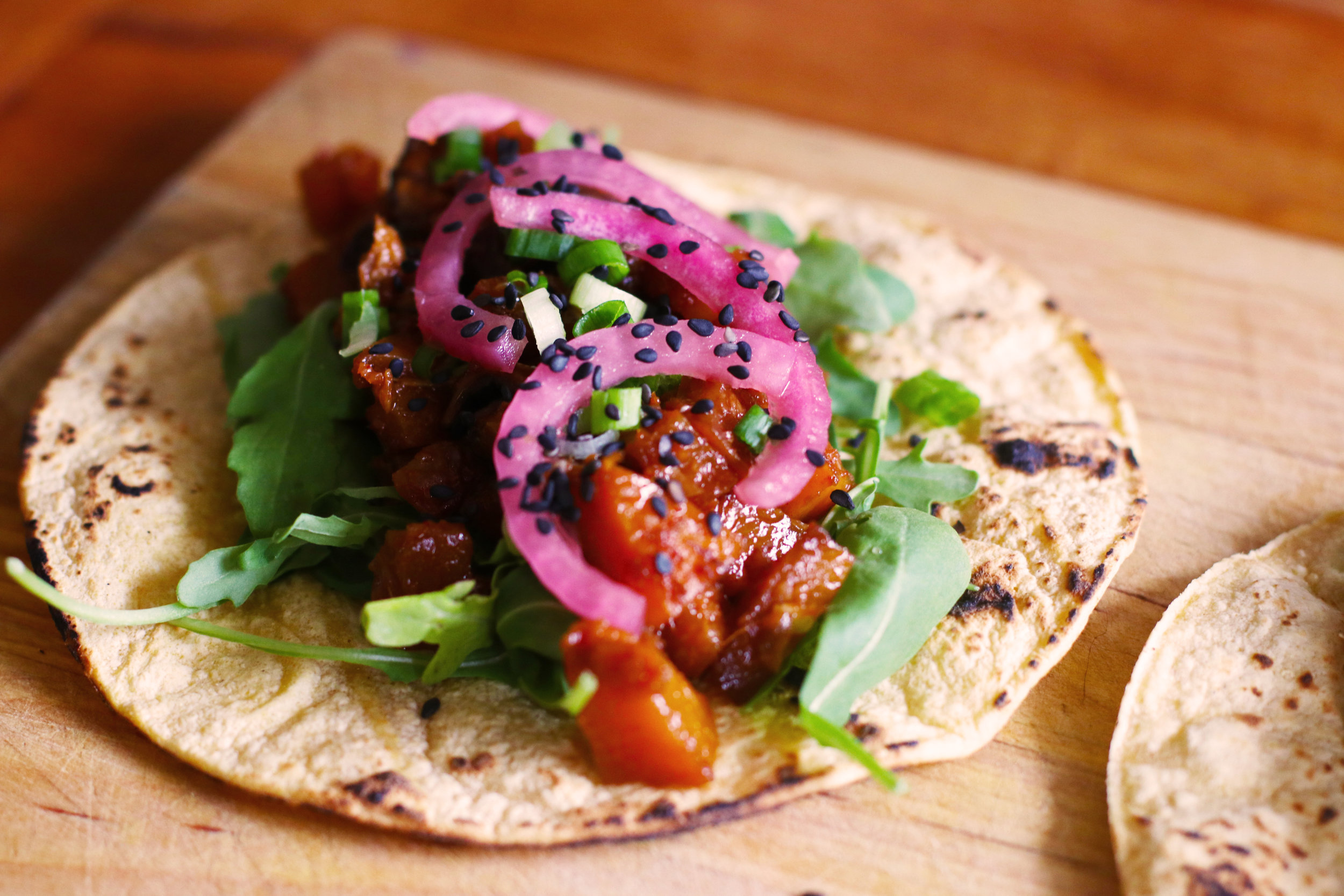Squash Bulgogi Tacos
To me, Korean cuisine is the ultimate comfort food. If you haven’t had it before… change that right this instant! Wildly complex and strong flavors, brightness, deep umami, its the best. You know what else is the best? Hand food. I’m not going to pretend to be the one who invented Korean Tacos (shout out to Roy Choi), but I am daring to say that you can enjoy that genius fusion sans the meat, plus the seasonality. Check it out:
Ingredients
¼ Large Butternut Squash : this can replaced with things like potatos, other types of squash. Remove top and butt, peel exterior, cut in half, remove inside pulp, dice the quarter into roughly ¼- ½ pieces
6-10 Shitake Mushrooms : Cut into roughly ½ pieces
½ Red Onion : Cut into 1.5-2 inch strips (imagine
3 Cloves of Garlic : I find its easiest to grate with a microplaner. The finest edge of a cheese grater will do the trick as well. If you don’t have access to either of these, chop!chop!chop! as finely as you can!
5-6 tbsp Soy Sauce
2 tsp Gochujang : Out of the refrigerator, this can be super thick and tacky. I like to put it in a small bowl and microwave with a small splash of rice vinegar for 10 seconds just to soften before incorporating into the marinade
1 tsp Grated Ginger : Make sure to remove the skin as best as you can before grating (a common trick is to scrape the skin with a spoon). I find its easiest to grate with a microplaner. The finest edge of a cheese grater will do the trick as well. If you don’t have access to either of these, chop!chop!chop! as finely as you can.
½ Pear : Either grate with a cheese grater or chop!chop!chop! until its almost like a paste
2 Green Onions : Remove the butt-ends and slice into thin rounds. The whole thing! I like to cook the whiter end (thus incorporate into the marinade) and keep the greener end for garnish (thus save to the side until you assemble)
1 tsp Toasted Sesame Seeds : You can buy them pre-toasted, or you can toast them yourself by pouring them into a pan on medium heat and stirring until they become fragrant (keep them moving!! They can be very easy to burn). Toasted seeds release their frangrance and inner-oils more easily.
2 tbsp Toasted Sesame Oil
Corn or flour tortilla : This is a matter of preference. I find that flour torillas are typically softer and better and absorbing the juices of whatever you put in them, and corn torillas offer more flavor to the ensemble
½ cup Rice vinegar
1.5 tsp Salt
1 tbsp White Sugar
2 tbsp Brown Sugar
Arugula (very optional)
Preparation
Assemble marinade: Combine the Red Onion, Garlic, Soy Sauce, Gochujang, Ginger, Pear, Sesame Oil, and Brown Sugar in a bowl and whisk until a smooth, uniform sauce comes together. Once the marinade is mixed well, mix in the Squash, Onions, and Mushrooms, and transfer the mixture into the smallest tupperware they will fit in (you want to make sure that as many of the vegetables are in contact with the marinade as possible).
Begin the pickling: For the pickled red onion, cut the onion into semi-circle slices, the cut those cross-sections in half (does that make sense?). Add the rice vinegar, 1/4 cup of water, the white sugar, and the salt to a mason jar, add onions and shake or stir around, make sure they are submerged!
Let pickle and marinade sit over night
Spread the marinade out evenly on a parchment-lined baking tray, and cook for roughly 20 minutes at 375 (or until the squash can be easily stabbed with a fork, the residual marinade has reduced, and browning has started to occur), let cool slightly before serving
While the bulgogi is roasting/cooking, prepare garnishes and tortillas! Cut the green onions (the whole damn thing! Except the frilly butt-end) into small circles, chop your greens (if you have them) if they are larger than 1-2 inches, and toast your torillas! I lay the tortillas directly over a stovetop burner on low heat and flip every 5 seconds or so until there are beautiful brown spots all over, you HAVE to keep an eye on these if you do this though, 5 seconds too long and youll have a blackened crisp.
Finally, assemble! Take your tortilla, lay down a thin layer of greens, followed by the squash bulgogi, followed by the pickled onion, followed by the green onion, followed by a sprinkling of sesame seeds. Enjoy!
Best Practice:
As always:
Avoid packaged produce, or really anything packaged for that matter. This is not to say that you’ll always have the option, but when you do, go for it! For example, you may sometimes see mushrooms in their own plastic containers, green onions in plastic wrap, and pre-cut squash in plastic tubs. These are all very often available sans any container, so take the opportunity to use your hands, smell the produce, build that relationship with your ingredients! That being said, arugula (or other greens) for example, might be difficult to avoid with packaging. Pick your battles and fight them well!
Try to bring your own bags when you go shopping for these ingredients
Make sure youre not buying more than you think youll reasonably use! Things like garlic, onions, squash, and the ginger will all last a while, so with those if you buy a bit more than you needed, youll have plenty of time to use them in the future. But with the mushrooms, green onions and arugula (or other greens), those will go bad fairly quickly so buy with care!
These ingredients have been chosen with several things in mind:
Most of these ingredients are household staples that are relatively inexpensive and last a long time
The Squash was chosen as it is currently seasonal to the Northeast, thus working to mitigate waste within local seasonal produce and reduce possible shipping and handling (big contributors to cost, carbon footprint, and freshness!). So, if you are from a different part of the world/country (or are reading this during a the spring or summer months in the Northeast), feel free to replace some of these ingredients with others that are similar in flavor and texture. The Squash could be replaced with potatoes, pumpkin, carrots, brussel sprouts, and many other heavy vegetables, feel free to experiment!
In the traditional version of this recipe, beef is used. The beef industry is one of the largest contributors to CO2, water use, and land use (within the food industry), and I do my best to not support industries at this scale as they typically do the most harm. That being said, if you have a local small-scale producer nearby, there is nothing wrong with indulging, just be sure to respect the ingredients!
It is likely that the most well known producers of the gochujang, rice vinegar, sesame seed oil, and soy sauce are located in Asia. There may be fantastic options that are located more locally and I would encourage you to explore those options! You might be able to save on significant shipping emissions and will be able to support and connect with local businesses!
Did you try this recipe? Tag @groundedgrub on instagram or facebook and hashtag it #groundedgrub!



